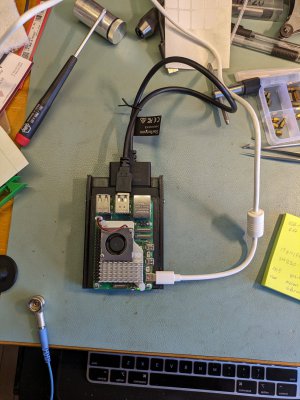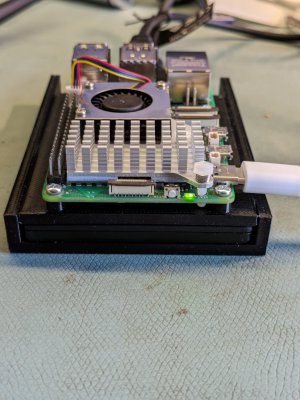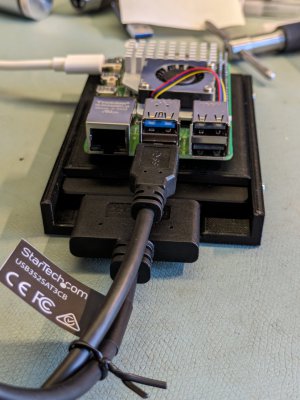I wanted a chalk sharpener. You can buy them — there’s a few different varieties — but all the ones I’ve seen work essentially the same way. A series of closely-spaced blades that you scrape your tailor’s chalk over to restore a nice sharp edge. I didn’t want to buy one, so I made one instead.
I had a few ideas for the blades but in the end I settled on standard utility blade refills. A pack of 50 was twelve dollars or something, and I use them all the time anyway so no money wasted. For the block I just pulled some scraps of mahogany out of one of my boxes. It works easily and I always like the looks of it. I would support the blades, sharp edge up, on the angled ands and leave a little bit of a trough in the centre as a reservoir for the chalk dust.
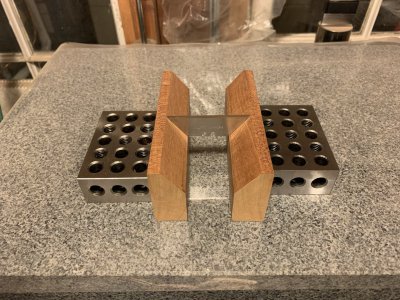
These utility blades are about 0.024” thick and I have an 0.028” thick slitting saw so I used that to cut the slots. Setting up for cutting took the longest time of anything, mainly because of the angled faces. I tried every way I could think of to hold the blocks and finally had to bring over my Starrett vise from the drill press — it was the only one I had that was long enough to clamp the pieces by the ends. It looked pretty goofy on my tiny milling machine table but it worked. I spaced the cuts an eighth of an inch apart, so over 4” there will be 33 blades.
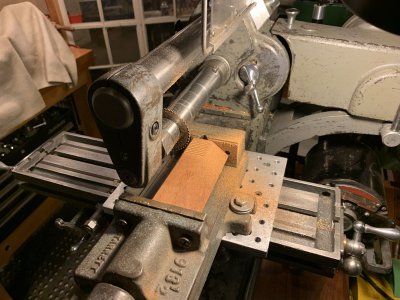
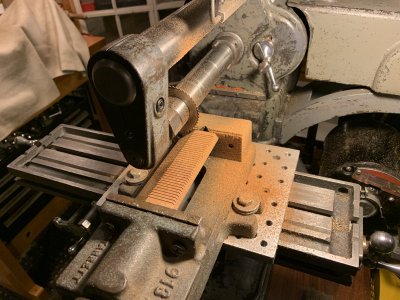
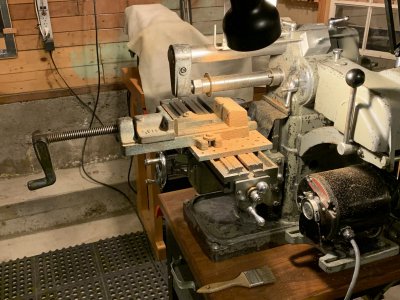
Once I had the slots finished I glued the blocks together and put on a couple of end caps. After a bit of sanding and a couple coats of varnish I was ready to set in the blades.
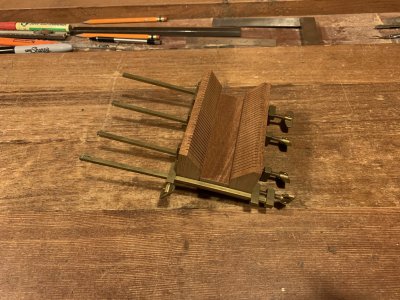
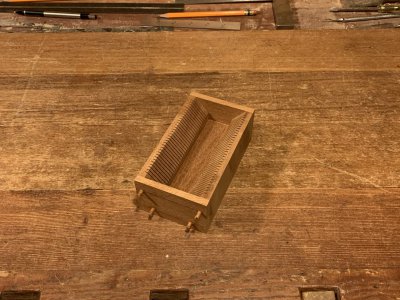
My plan was to set the blades in epoxy so they wouldn’t chatter in the block during use and also so they wouldn’t fall out when I turn the block over to dump out the chalk dust. I wanted to keep the gluing to a minimum and not smear it all over the place so I masked off each side but left a window down the centre where I would put the epoxy. This worked pretty nicely, and a palette knife has just enough spring to force the epoxy into the slots but not so stiff as to feel clunky. Then I put the blades in, one by one, with a pair of tweezers.
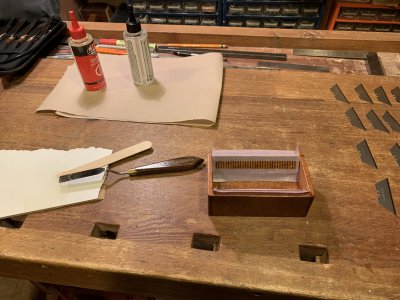
I thought I’d have more time on the epoxy than I actually did, and by the last few blades I could tell it was starting to set up a bit. I made it though, and once they were all in their slots I used a little block of wood to seat them in as uniformly as I could. There was a wee bit of squeeze-out on the tops of some of the slots but I managed to scrape it off without it looking too unsightly. Just eyeballing it they look pretty even.
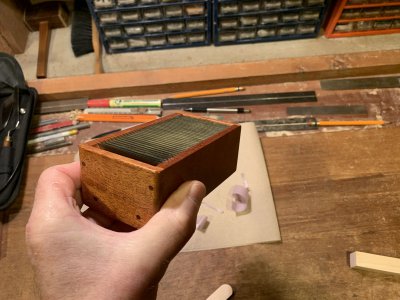
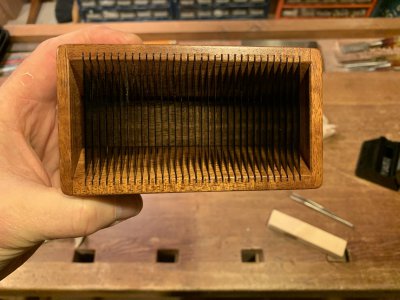
It makes me feel a bit queasy looking at all those razor-sharp edges pointing straight up and ready to slice me to smithereens but it does do the job. And very nicely at that, I must say. I’m going to leave it without a lid for a while for a while and see how I like it. If I do decide to make one I think I’ll just bend something up out of copper that just slides on and off but still keeps the blades covered when not in use. Might be the smart thing to do. Thanks for looking!
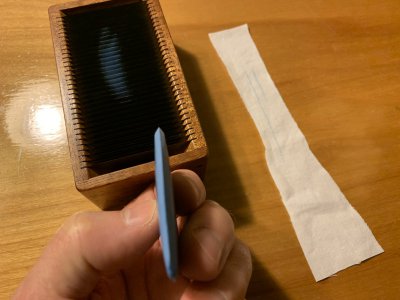


 Noticed how I used the non-offensive "Murphy" and avoided mentioning the obvious derogatory descriptor.
Noticed how I used the non-offensive "Murphy" and avoided mentioning the obvious derogatory descriptor. 
